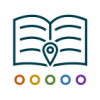| Best Practice 4 - Rotterdam Digital City |
|---|
| Country: Netherlands |
| Policy domain: Multiple |
| Level of government: Local |
| Process owners: City of Rotterdam |
|
Short description: The Municipality of Rotterdam is investigating the possibilities for the future city in the Digital City (DC) programme. The core of this programme is the development of a digital Open Urban Platform with a 3D Digital Twin of Rotterdam. The 3D Digital Twin of the city is a model of the city in which all fixed physical objects (houses, trees, benches, etc.) are included. This model is supplemented with ‘live’ data about the use of the city: Is that streetlight on? Is that parking bay occupied? Is that waste container full? Through a series of pilot projects with internal and external parties, the DC programme is gaining new knowledge to simulate the necessary developments. Opportunities are being targeted in the areas of economy, spatial planning, services, participation, safety, and asset management. Prototype proofs of concept were delivered for four applications in 2020:
The objective is to have the platform operational for all users in 2022. |
| Recommendations: Policy and Strategy Alignment (4, 5); Digital Government Integration (6, 7); Standardisation and Reuse (12); Return on Investment (16); Governance, Partnerships and Capabilities (18) |
| Link: https://www.rotterdam.nl/wonen-leven/digitaal/ |
Version: EULF Blueprint v5.1 |

